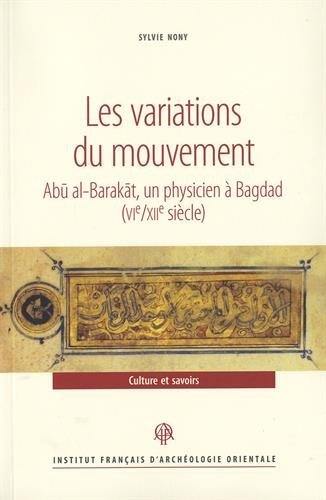
Collection(s) : Recherches d'archéologie, de philologie et d'histoire
Paru le 25/05/2016 | Broché 320 pages
Professionnels
préface Michel Blay
Pourquoi la pierre lancée en l'air poursuit-elle son mouvement loin de la main du lanceur ? Pourquoi ralentit-elle pour accélérer ensuite ? Ce mouvement serait-il possible dans le vide infini ? S'arrête-t-il un temps, en haut de la trajectoire ?
Depuis l'Antiquité, les interprétations de ce mouvement ont suscité des discussions passionnées, et la controverse est encore vivante lorsqu'un philosophe juif, médecin du calife de Bagdad, Ab(...) al-Barak(...)t (m. 1152), en renouvelle l'approche.
Le présent ouvrage nous guide dans un réseau complexe de textes abordant les notions d'espace, de vide, de temps, d'infini, de continu et met en lumière les apports de la physique médiévale arabe. L'auteur interroge à cette occasion la nature des filtres qui ont empêché jusque là d'en restituer toute la portée. L'histoire des sciences, parfois obnubilée par la recherche des continuités, peine à identifier les inventions audacieuses lorsque celles-ci ne semblent pas aller dans le sens de l'histoire.
Why does a stone thrown into the air keep going, even after it has left the thrower's hand ? Why does it slow down before speeding up again ? Could it be thrown in a void without end ? Is there a rest at the peak of its flight ?
Interpreting this movement has aroused impassioned debate since antiquity ; the controversy was still ongoing at the time when the Jewish philosopher Ab(...) al-Barak(...)t (d. 1152), physician to the Caliph of Baghdad, provided a new approach to it.
This book takes the reader through a labyrinth of texts dealing with notions of space, emptiness, time, infinity, and continuity ; it sheds light on mediaeval Arabic contributions to physics. The author also explores the barriers that have hitherto obstructed complete understanding of the subject. The history of science, which sometimes fixates on the study of continuities finds it hard to get to grips with disruptive theories if they do not seem to follow the larger trajectory of history.
Sylvie Nony est professeure agrégée de sciences physiques à Bordeaux et chercheuse associée à l'UMR 7219 SPHère.
Sylvie Nony is Physics Teacher (Bordeaux) and Associated Researcher, UMR 7219 SPHère.